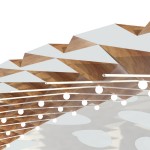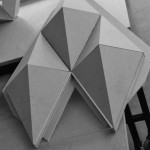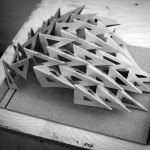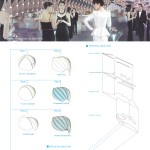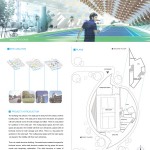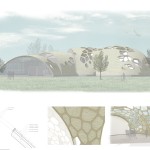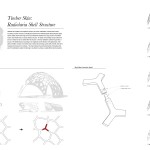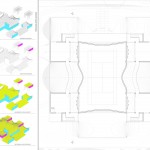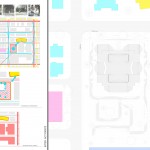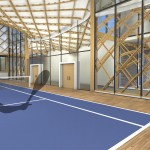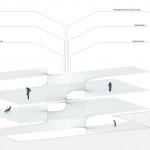Project By: Jie Liu
The project focused on the potential of liberalism in component shell structures. The design starts from the stability of the graphic by using four triangle surfaces to create structural depth within the component. Assembling the components through hyperfine lines creates a continuous structural order to place the tennis court and related functional spaces. Loads are transferred through the axes of each components, together with secondary cable joists. The gaps between the components respond to sunlight, establishing the natural lighting system for the whole project.

